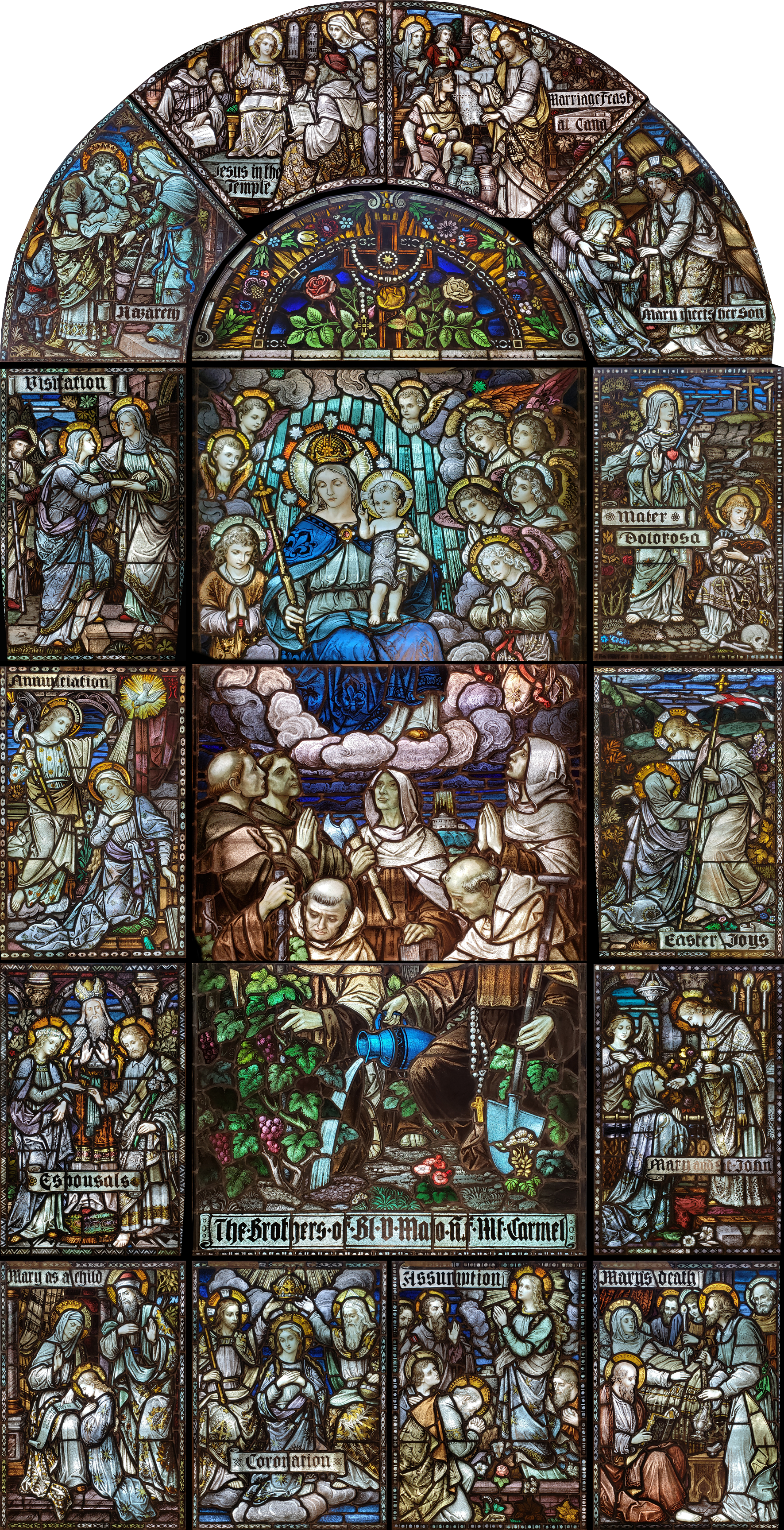THE CHAPEL
OF THE HOLY
FACE OF JESUS
The Discalced
Carmelite Nuns
The Monastery of Our
Mother of Mercy and
St. Joseph
Alexandria, SD
Called to a Life of Prayer
“Blessed are you poor, for yours is the Kingdom of Heaven.” The Sisters of the Monastery of Our Mother of Mercy and St. Joseph have fully embraced the first beatitude, becoming a visible reminder of each human being’s ultimate purpose in life: a deep and intimate relationship with God the Father, Son, and Holy Spirit.
In contemplation, they find fruitfulness that surpasses human action because it is entirely dependent on their Divine Spouse, who created all things and holds them in being. Like the contemplative life modeled so beautifully by Martha’s sister Mary, who sat at the feet of Jesus, Carmelite Nuns have chosen the “better part that will not be taken away.”

Holy Face Chapel and Monastery Expansion Flythrough

Building for the Future
With help from the friends of God, the Carmelite Nuns will build a new chapel dedicated to the Holy Face of Jesus . The purpose of this devotion is to make reparation for blasphemy against the first three commandments: denial of God, profanation of the Holy Name of God, and the non-observance of Sundays and Holy Days.
The Sisters feel called to dedicate their new chapel in honor of the Holy Face of Jesus. This devotion traces its roots to 1844, when the Carmelite nun Sr. Mary of St. Peter received visions from Jesus asking her to promote a devotion to His Holy Face as reparation for sinners.

Nearly 40 years later, the devotion received official approval from Pope Leo XIII when he erected it as an arch-confraternity for the entire world. This devotion to the Holy Face of Jesus captured the heart of a young Therese of Lisieux, who chose to add to her Religious name the title “and of the Holy Face.”
The Sisters hired Ohio architect William Heyer to create a conceptual design to expand the monastic enclosure and create a new chapel. Mr. Heyer holds a master’s degree in sacred architecture from the renowned program at Notre Dame University.
With a successful concept in hand, the sisters then turned to the oldest architectural firm in South Dakota, TSP, to be their “architect of record” in developing the concept into buildable design documents. TSP is led by principal architect Michelle Klobassa and TSP’s director of design, architect Chase Kramer. The Sisters continue to retain Mr. Heyer to act as a consultant in helping the TSP team to attain the most authentic sacred design features.
Preserving the Past

Seven stained glass windows that show the history of the Carmelite order will illuminate the new sacred space. These priceless windows were rescued from St. Clara Catholic Church in Chicago, the former provincial church for the Calced Carmelites in America and Shrine of St. Therese, after a fire nearly destroyed them.
The windows consist of six 8 x 14 ft. panels and one 11 x 19 ft. panel which each tell a portion of the Carmelite history. Images portray the life and acts of their founder Elijah (Elias), the devotion of the Carmelites to the Blessed Mother, the writing and approval of the Rule of St. Albert, and the spread of the Brown Scapular and the Sabbatine Privilege.
The chapel exterior is meant to visually complement St. Mary of Mercy Catholic Church, the parish church across the street, which is the home of the Mid-America’s Fatima Family Shrine. The style is a version of Romanesque with locally quarried, beautiful, dark stone.
The interiors will be simple and prayerful, in keeping with Carmelite spirituality, but well-proportioned with ample light and warm, natural materials. The new monastery choir will be attached to the chapel with the customary Carmelite grille in place to protect the Sisters’ enclosure and privacy. The Sisters will use the choir to participate each day in the Mass and to pray the Divine Office and two hours of mental prayer required by their Holy Rule.


Wearing the Mantle of Elijah
The Monastery of Our Mother of Mercy and St. Joseph was founded by five Carmelite Nuns in Alexandria, South Dakota. On August 15, 1997, Bishop Robert J. Carlson conducted the ceremonies for papal enclosure, and the foundation has since grown to include 12 Solemnly Professed Nuns, one novice, and others preparing to enter.
As members of the Discalced Carmelite Order, the Sisters follow in a monastic tradition stretching back nearly three thousand years.
Ancient Carmelite tradition relates that the Prophet Elijah (Elias) founded their order after demonstrating God’s power to the prophets of Baal on Mt. Carmel. In the cloud rising from the sea, Elias was given to see an image of the coming Mother of God. Elias’ followers became known as the “sons of the prophets” and maintained the eremitic life based on Elias’ example on Mt. Carmel until the time of Christ.
Carmelite tradition shares that on the day of Pentecost, many of the sons of the prophets were numbered among the 3,000 that heard Peter preach and, pierced to the heart, were baptized.

According to an age-old tradition, these first converts built and dedicated the first oratory in honor of the Mother of God on Mount Carmel. Because of their devotion, they came to be known as the Brethren of the Blessed Virgin Mary. The eremitic life flourished on Mt. Carmel until the Persians conquered the region in 612. In the face of persecution, many hermits fled to Europe to beg support for their suffering brethren and also to reestablish their own eremitical life in a more peaceful setting.

The order took on a more Latin monastic form when St. Albert, Patriarch of Jerusalem wrote their Rule, which was approved by Pope Honorius in 1226. St. Simon Stock, elected general of the Order in 1247, received the Brown Scapular from Our Lady in 1251 in response to his fervent prayer for Mary’s protection of the Order, which was in danger of losing its identity with all the changes being required in their move to Europe and becoming a new mendicant order.
In the 16th Century, the Holy Spirit inspired St. Teresa of Avila to undertake a reform of the order, which led to the formation of the first house of nuns in 1562.
With the collaboration of St. John of the Cross, she organized a return of both nuns and friars to the Primitive Rule of St. Albert, which reinstated several austere disciplines that had been abandoned during the years when the Black Plague ravaged Europe.
The Discalced Carmelite Order spread to the New World with several foundations starting in Mexico. These foundations flourished until the Mexican Revolution in the early 20th century. Severe religious persecution drove Mother Elias of the Carmel at Queretaro from Mexico to Cuba. When she returned to Mexico to fetch her remaining Sisters and take them back to Cuba, she and another Sister were taken into custody by revolutionaries, interrogated, lined up before a firing squad and shot. Mother Elias woke up at 2:00 AM in the spot where she fell, covered in blood but otherwise unharmed.

Gathering her Sisters, she fled first to Cuba and then to the United States, establishing the Community in Grand Rapids, MI. From there, she went to Buffalo, NY and founded the Monastery of the Little Flower of Jesus on April 24, 1920. The permanent monastery was dedicated on May 17, 1925, the very day St. Therese was canonized, fulfilling Mother Elias’ promise to the saint while facing the firing squad, “…deliver us and I promise I’ll found a monastery in your honor.”
Some 70 years later, the Bishop of Sioux Falls, seeking the prayer support provided by contemplative religious, invited the Buffalo Carmel to make a new foundation in his diocese. They agreed and – in the same year St. Therese was made a Doctor of the Church – the Monastery of Our Mother of Mercy and St. Joseph was born.

The Monastery is autonomous and receives no financial support from the Diocese or the Order. They depend entirely on donations from supporters like you.
Counting the Cost

The building project includes a significant expansion of the monastic enclosure and a renovation of some existing spaces including the following:
- The new Chapel of the Holy Face.
- A new Choir.
- New and expanded sacristies.
- Nine additional cells.
- A new chaplain’s quarters.
- A new, larger recreation room.
- A new receiving and utility area.
- A new cellar for mechanicals, and other storage.
- A new applicant/visitors suite.
- A new cemetery for deceased Sisters.
- A renovated main entrance, gift shop, and greeting area.
- A renovated library.
- Renovated parlors for visitors.
- A renovated infirmary, dispensary, food prep, and food storage area.
Project Budget
| Design Fees | $1 M |
| Construction Costs | $10 M |
| Liturgical and other Furnishings | $4 M |
| Operational Systems (Sound, Security, Phone, Data, etc…) |
$1 M |
Total Cost: $16,000,000
Funds Raised to date:
$1,143,962
Make your gift in secret
In capital campaigns, it is common to offer recognition opportunities to donors who make significant gifts. The Carmelites very strongly believe that doing so would rob their supporters of a heavenly reward that will far outweigh any earthly glory they might get from recognition. “Do not let your left hand know what your right is doing, so that your almsgiving may be secret. And your Father who sees in secret will repay you.” Matthew 6:3-4.The Sisters pray for their benefactors daily.

Prayers on the Prairie
The Church recognizes the magnificent gift that contemplative Sisters give the world. “The community of the monastery of nuns, placed as a city on the mountain top and a light on the lampstand, even in the simplicity of its life, visibly depicts the goal towards which the whole ecclesial community walks, ardent in action and dedicated to contemplation, it advances along the paths of time with eyes fixed on the future recapitulation of everything in Christ.” (Cor Orans)
When Jesus spoke to His disciples about the need to evangelize, He told them, “The harvest is abundant but the laborers are few; so ask the Master of the harvest to send out laborers for His harvest.” (Matthew 9:37) The call to pray for the harvest and its laborers, the priests, is at the heart of Carmelite life.
The Carmelite Nuns of the Monastery of Our Mother of Mercy and St. Joseph embrace the evangelical counsels of poverty, chastity, and obedience, hidden within a silent cloister, to pray for the apostolic and evangelical labors of the Church. They discovered the treasure in the field and gave up everything they had to possess it.
Will you help the Carmelites build a house of worship that glorifies the Holy Face of Jesus?
Please prayerfully consider making a gift that will build a legacy of prayer for generations to come.
Give Today